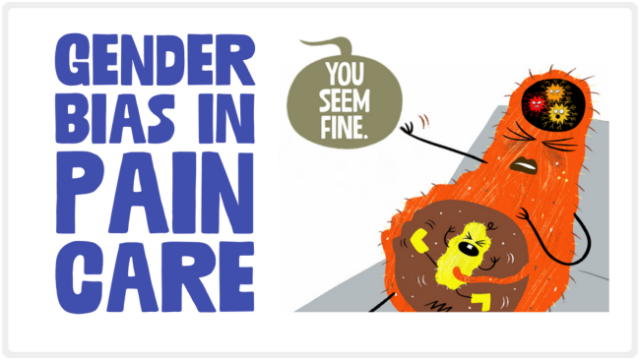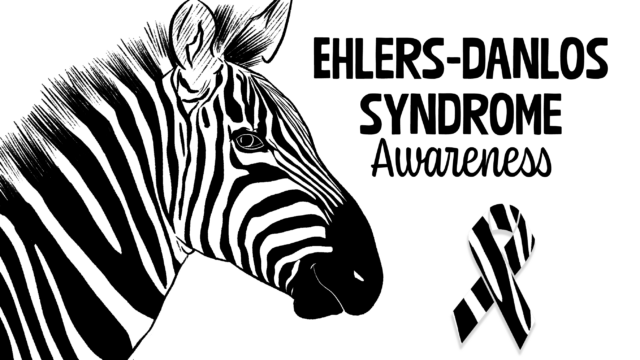5 Ways Pain Affects the LGBTQIA+ Community
Pain isn’t just physical—it’s deeply shaped by who we are, how we see ourselves, and how the world treats us.
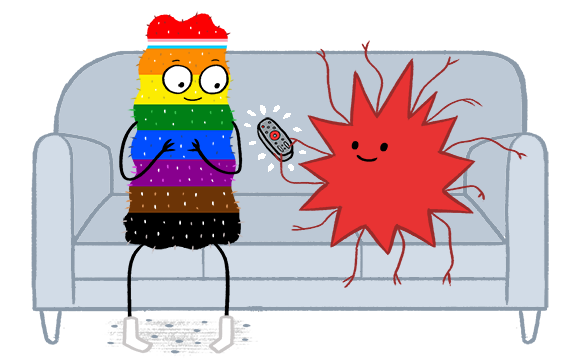
When we talk about pain, we often think in terms of physical symptoms—headaches, chronic conditions, injuries, or procedural pain from things like blood tests and vaccines. But the reality is that pain is far more complex: it’s a complicated mix of biological, psychological, and social factors. Because pain is influenced by our biology, psychological well-being, and the way society responds to who we are, there are things that need to be considered when it comes to members of the LGBTQIA+ community.
Here are five important things to understand about how pain uniquely affects LGBTQIA+ individuals—and why inclusive, affirming care is essential:
1. Sex and Gender Are Not the Same—And They Both Affect Pain Differently
“Sex” is about biological traits like chromosomes (essentially the instruction manuals in all our cells), hormones (the natural chemicals all of us have that help regulate what’s happening in our bodies), and reproductive anatomy (aka, our body parts). These biological differences can influence how pain is experienced and managed. For example, hormone levels can affect how we experience pain, including pain sensitivity.
“Gender,” on the other hand, includes identity (how you deeply feel and know yourself to be), expression (how a person outwardly presents their gender), and the societal roles we’re expected to play.
These cultural expectations deeply influence how people express pain—and how other people respond to their pain.
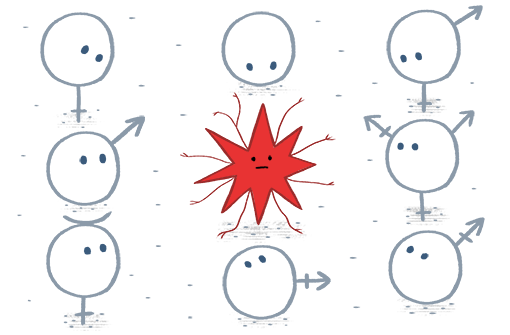
These cultural expectations deeply influence how people express pain—and how other people respond to their pain. For example, boys are often taught to “tough it out,” while girls may be allowed more freedom to express discomfort. Nonbinary or gender-diverse people often fall outside these norms and can be misunderstood or overlooked in healthcare settings, and that can lead to substandard pain care.
“Sexual orientation” refers to who someone is emotionally, romantically, or physically attracted to, which adds another important layer to experiences with pain. While it doesn’t directly alter the biology of pain, it shapes lived experiences that can affect how pain is felt, understood, and treated. For example, people who identify as lesbian, gay, bisexual, or queer may face discrimination or stigma in healthcare settings, which can increase stress, reduce trust in providers, and make it harder to get compassionate, effective pain care.
2. Minority Stress Can Make Pain Worse
Being part of a marginalized group often means experiencing something called minority stress. For LGBTQIA+ individuals, this includes the emotional and physical toll of discrimination, stigma, rejection, and pressure to hide one’s identity. Research has also shown that even siblings who witness abuse or harassment of their family member’s gender and/or sexual minority are at greater risk of what is called functional pain (real pain that happens even though there’s no clear injury or disease causing it). This happens because chronic minority stress can heighten pain sensitivity or worsen existing conditions for both LGBTQIA+ individuals and their families.
On the other hand, having meaningful and supportive relationships—like friends, family, or community who truly accept you—can help lower the chances of feeling pain or make it hurt less for LGBTQIA+ people. For example, some studies have suggested that gay and lesbian youth often report feeling more connected to the LGBTQIA+ community and have a strong sense of identity. The connection can help protect them from stress and pain. In contrast, bisexual youth may have a harder time feeling fully accepted, feeling sure about their identity, or feeling safe sharing it. These are all examples of minority stress that may explain relatively higher rates of chronic pain in this group.
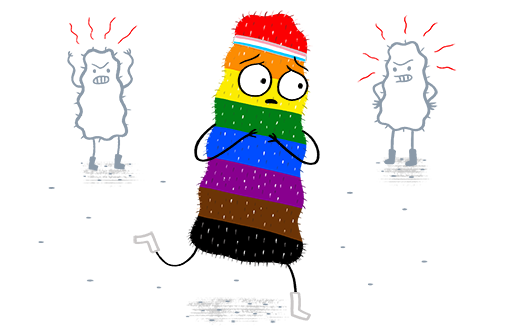
It’s crucial to understand that gender and sexual diversity does not cause pain.
It’s crucial to understand that gender and sexual diversity does not cause pain. Rather, the systems and environments that are unsupportive or hostile create stress that negatively affects health. When we create spaces where everyone feels truly accepted, safe, and included, it reduces stress, and in turn, reduces pain.
3. Menstrual Pain Is Often Overlooked in Trans and Nonbinary Youth
Menstrual pain (aka period pain) isn’t just a “girls’ issue.” Transgender and nonbinary individuals who have periods often face unique challenges in managing period-related pain. Along with physical discomfort, menstrual pain can be a tough reminder that one’s body does not match their gender identity, which can bring up strong feelings of discomfort with one’s body, sadness, and distress, often referred to as menstrual dysphoria.
A lot of resources assume everyone who gets their period is cisgender (gender identity matches the sex they were assigned at birth), which can make things confusing and isolating for transgender and non-binary youth. Additionally, environments that are not fully accepting or validating of a person’s identity can make it difficult—or even unsafe—for youth to ask for help. Sexual orientation matters here because it connects with gender identity. How those two things come together can affect how young people deal with menstrual pain, especially when it comes to talking about it with others or getting help.
The people around us, like parents, teachers, peers, and healthcare providers, can make a big difference. In safe and supportive spaces, queer youth may feel more comfortable opening up about period pain or body-related struggles. But in places that aren’t as accepting, they might stay quiet to avoid being judged, misunderstood, or outed before they’re ready. This is why we need more inclusive resources and open conversations around menstrual health that honor the full spectrum of gender identities.
4. Gender-Affirming Practices Can Affect Pain for Better or Worse
Many practices that support and validate an individual’s true gender identity (like chest binding, tucking, or hormone therapy) can be both a source of relief and discomfort. They often provide what is called gender euphoria – a profound feeling of joy, satisfaction, and rightness that arises when a person’s gender identity is affirmed, expressed, or perceived in a way that aligns with their authentic self. That said, the process itself can cause some pain that needs to be managed. For example:
- Binding can cause chest, back, or rib pain if done unsafely—but when done properly, it can provide a sense of safety and gender euphoria that improves mental and emotional well-being. This blog explains more about how to do it as comfortably as possible.
- Hormone therapy can change pain patterns. Some people experience new types of pain (like breast tenderness or pelvic pain), while others see improvements in conditions like migraines or joint pain.
- Gender-affirming surgical or needle procedures can be painful. That said, when people can truly live as their authentic gender, it can have incredibly positive effects on how they feel about themselves and how they connect with others.
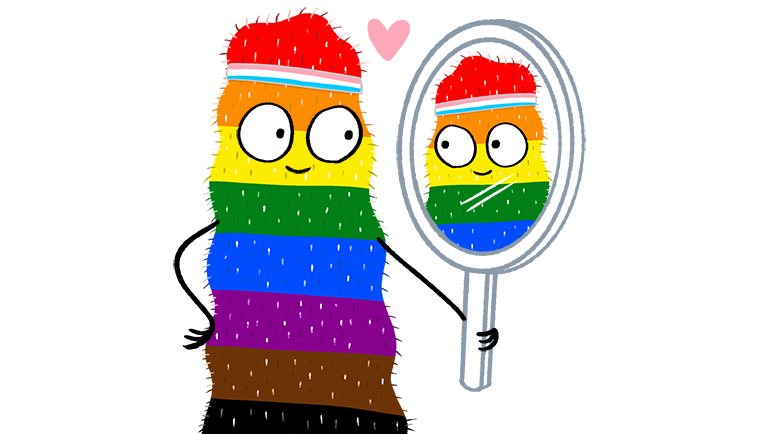
The benefits to mental and social health are profound. These benefits may help reduce pain sensitivity by alleviating minority stress and limiting social barriers. It’s important to provide people undergoing these procedures with good pain management to create as much comfort as possible. This blog can tell you more about that.
Working with a knowledgeable and supportive healthcare team helps individuals weigh the risks and benefits of these practices and find the safest path forward.
5. Inclusive Care Makes a Real Difference in Pain Management
For LGBTQIA+ people, especially youth, feeling safe in healthcare settings is not a given. Small actions, like providers sharing their pronouns, inclusive language on forms, or creating space for open conversations about gender, sexual orientation, and pain, can make a big difference.
When patients feel seen and respected, they’re more likely to seek help, ask questions, and receive care that actually works. Inclusive care isn’t just a nice-to-have – it’s essential to effective pain management.
Inclusive care isn’t just a nice-to-have – it’s essential to effective pain management.
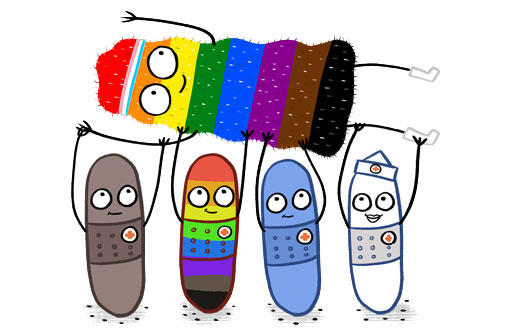
Final Thoughts
Pain is deeply personal, but it is not experienced in a vacuum. For LGBTQIA+ people, especially those navigating identity-related and systemic barriers, pain is shaped by biology, psychological well-being, and society. Giving people supportive care that respects who they are, creating welcoming spaces where everyone belongs, and a better understanding of the unique factors affecting this community can really help reduce pain, ease suffering and improve their health.
Everyone deserves to be seen, heard, and supported—especially when they’re in pain.

A. Natisha Nabbijohn, BSc, MA
PhD Candidate
Clinical Child and Adolescent Psychology (C-CAP)
Department of Psychology | University of Guelph
anabbijo@uoguelph.ca
Acknowledgment:
The information provided in this post was shaped through collaboration with clinicians, researchers, and patient partners who are members of the Gender and Pain Special Interest Group of the Society of Pediatric Pain.

A. Natisha Nabbijohn, BSc, MA
PhD Candidate
Clinical Child and Adolescent Psychology (C-CAP)
Department of Psychology | University of Guelph
anabbijo@uoguelph.ca
Acknowledgment:
The information provided in this post was shaped through collaboration with clinicians, researchers, and patient partners who are members of the Gender and Pain Special Interest Group of the Society of Pediatric Pain.
References
Boerner, K. E., Chambers, C. T., Gahagan, J., Keogh, E., Fillingim, R. B., & Mogil, J. S. (2018). Conceptual complexity of gender and its relevance to pain. Pain, 159(11), 2137-2141.
Keogh, E. (2021). The gender context of pain. Health Psychology Review, 15(3), 454-481.
Roberts, A. L., Rosario, M., Corliss, H. L., Wypij, D., Lightdale, J. R., & Austin, S. B. (2013). Sexual orientation and functional pain in US young adults: the mediating role of childhood abuse. PLoS One, 8(1), e54702.
McGeough, B. L., & Sterzing, P. R. (2018). A systematic review of family victimization experiences among sexual minority youth. The journal of primary prevention, 39(5), 491-528.
Roberts, A. L., Rosario, M., Corliss, H. L., Wypij, D., Lightdale, J. R., & Austin, S. B. (2013). Sexual orientation and functional pain in US young adults: the mediating role of childhood abuse. PLoS One, 8(1), e54702.
Weiss, K. E., Li, R., Chen, D., Palermo, T. M., Scheurich, J. A., & Groenewald, C. B. (2024). Sexual orientation/gender identity discrimination and chronic pain in children: a national study. American Journal of Preventive Medicine.
Boerner, K. E., Harrison, L. E., Battison, E. A., Murphy, C., & Wilson, A. C. (2023). Topical review: acute and chronic pain experiences in transgender and gender-diverse youth. Journal of pediatric psychology, 48(12), 984-991
You May Also Be Interested In
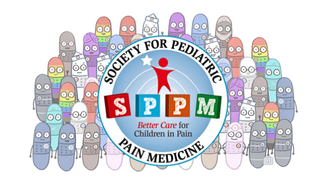
Blog Post
Why the World Needs the Society for Pediatric Pain Medicine
An interview with Dr. Rita Agarwal, Clinical Professor of Anesthesiology at Stanford and founding member of SPPM
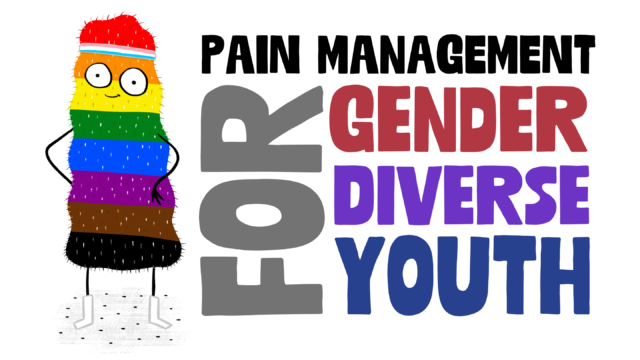
Blog Post
Pain Management for Trans and Gender Diverse Youth
At Meg Foundation, we’re all about empowering children and families with resources that will help them be more comfortable and less anxious during medical procedures. For trans and gender diverse youth, the word “empowerment” is a critical part of their medical vocabulary.
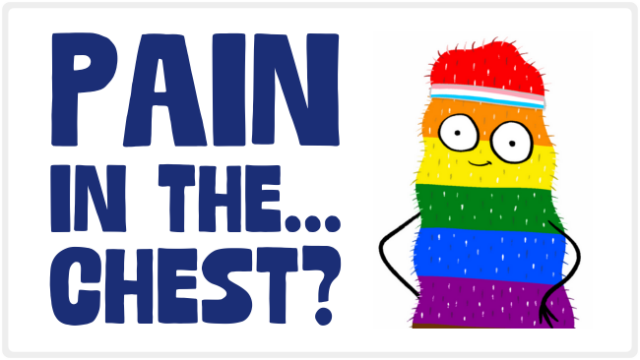
Blog Post
Pain in the…chest? Strategies to manage the pain and discomfort of chest binding
For transgender and gender-diverse people, chest binding can affirm identity and boost confidence, but it can also cause pain. Discover safe practices and tips to ease chest binding pain.
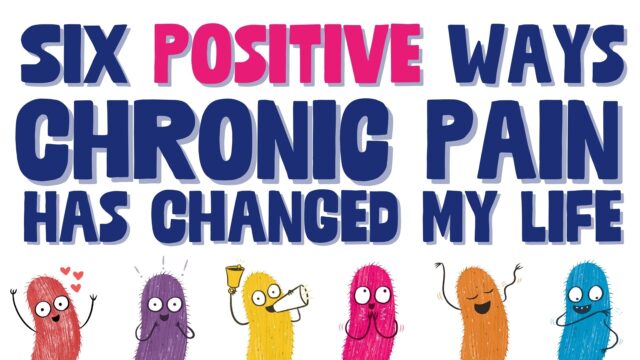
Blog Post
6 Positive Ways that Living with Chronic Pain Changed My Life: Lessons Learned Over a Decade
In this blog post, Brooke Greenberg, a Clinical Psychology PhD student, reflects on her 10-year journey with chronic pain and shares six positive ways it has transformed her life.
